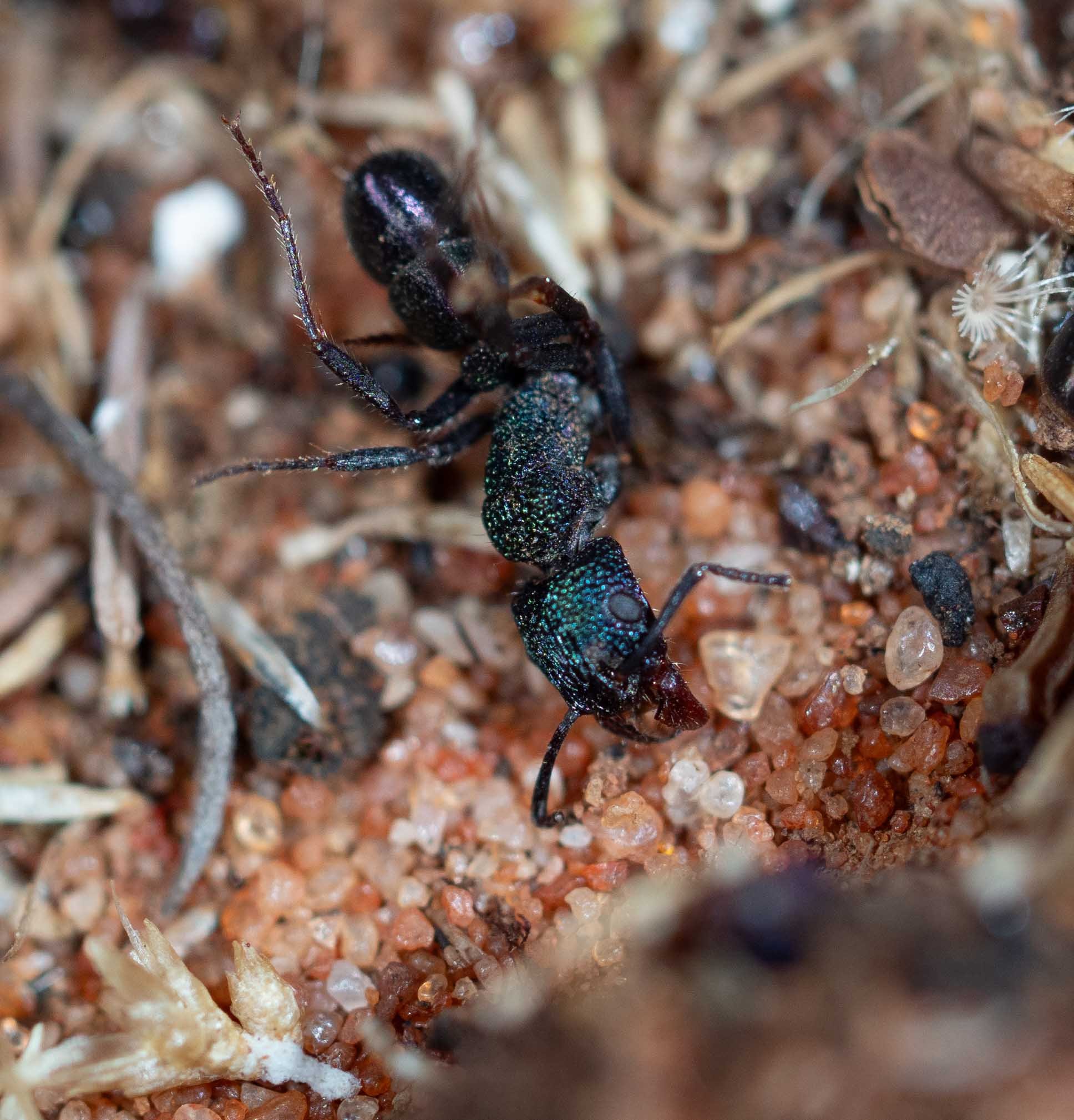
These tough-bodied little ants with the metallic sheen are a common sight across most of Australia. But unlike the meat ants, their colonies are often quite small. Indeed, we didn't see many individuals out and about. Also unlike meat ants, they can sting!
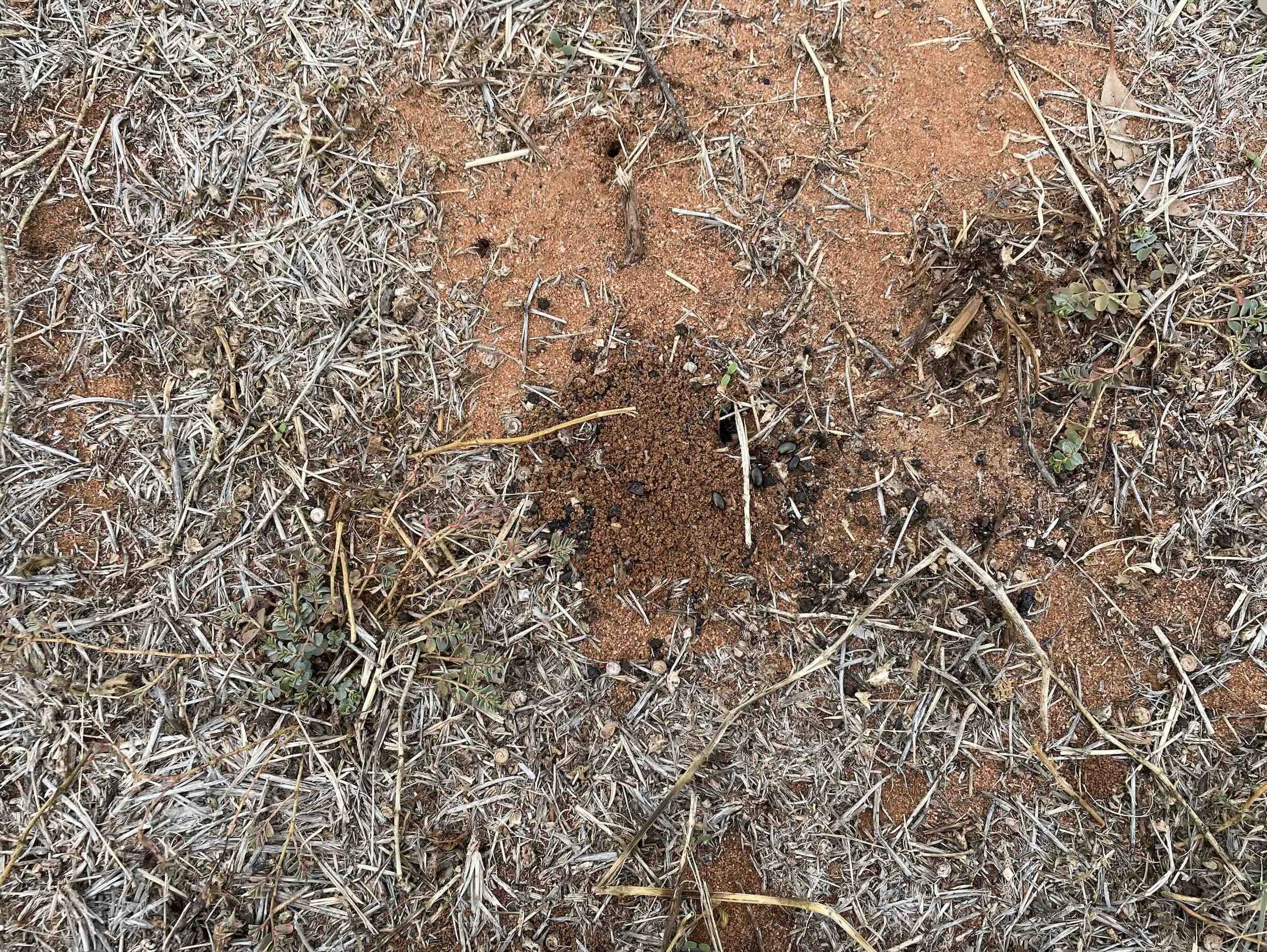
We found their nest on a little used track with a covering of dry vegetation. The low mound of excavated soil was less obvious than the collection of beetle carcasses surrounding it.
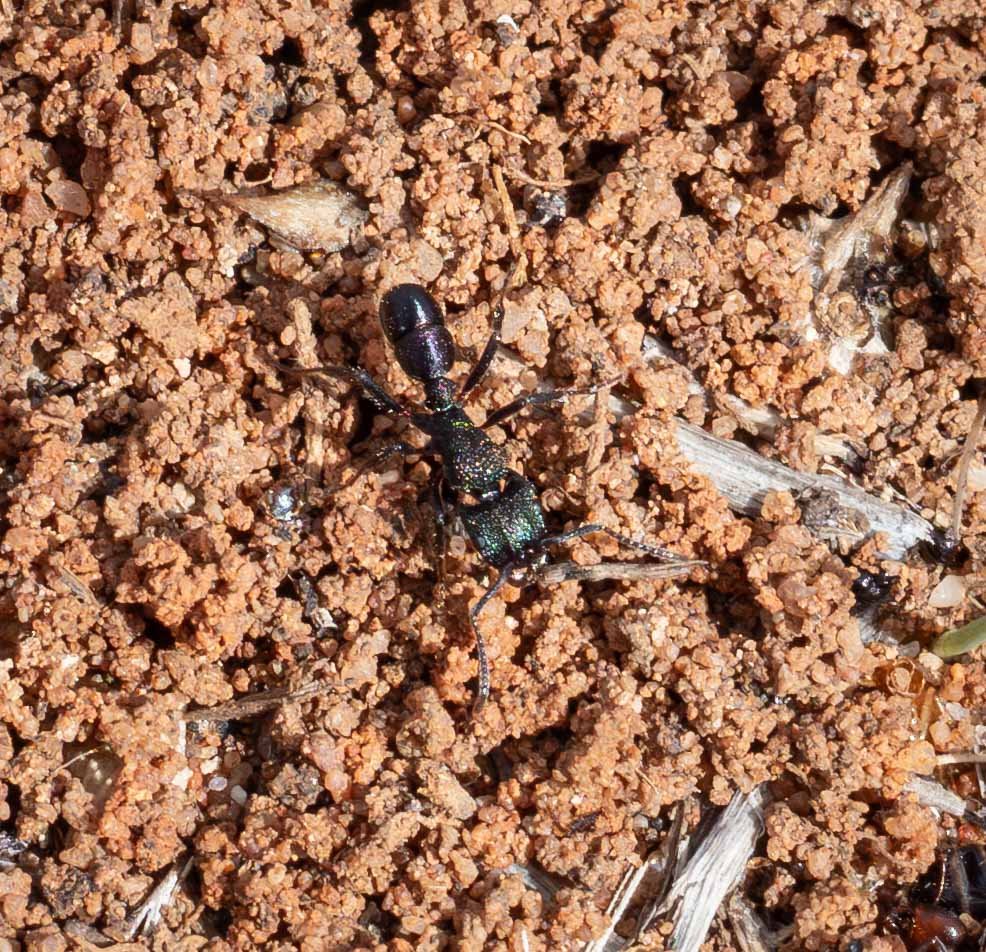
The literature on this species is extensive, their biology intriguing. Workers can mate and become reproductive, so colonies don't follow the typical 'single queen plus working daughters' model. And as colonies grow, the older workers tend to specialise in foraging while their younger nestmates stay home to care for the brood (ref. 2).
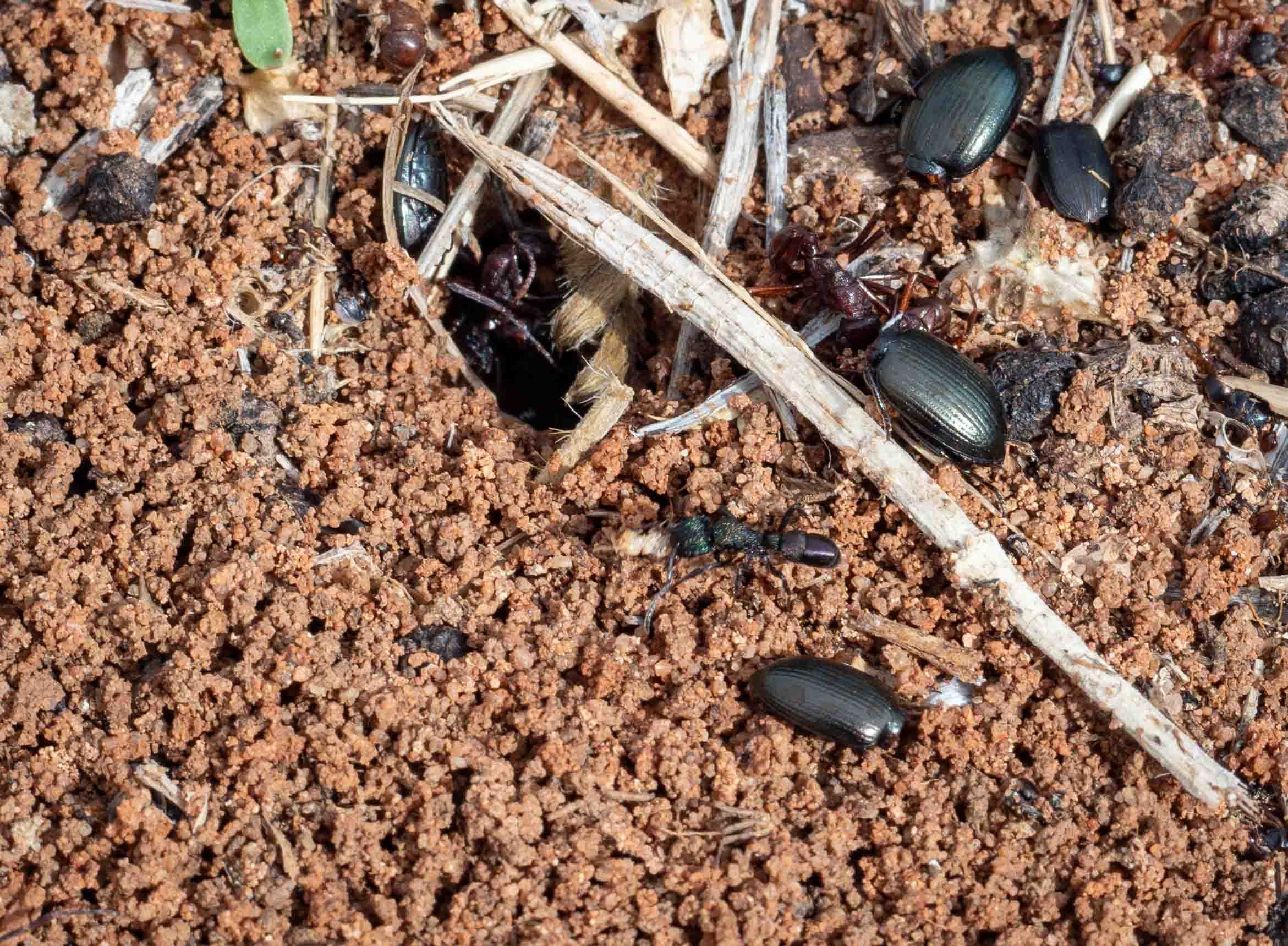
The nest opening was slightly obscured by grasses. Indeed, the reason we didn't see many active ants may be because they prefer to forage among vegetation. There they suffer less direct competition from their dominant neighbours, the meat ants (ref. 3).

These are large, long-legged ants. Despite their rather fierce appearance, they were not at all aggressive toward me. I actually had to tease them out of their nest opening for a photo ... this one I enticed onto a stick.
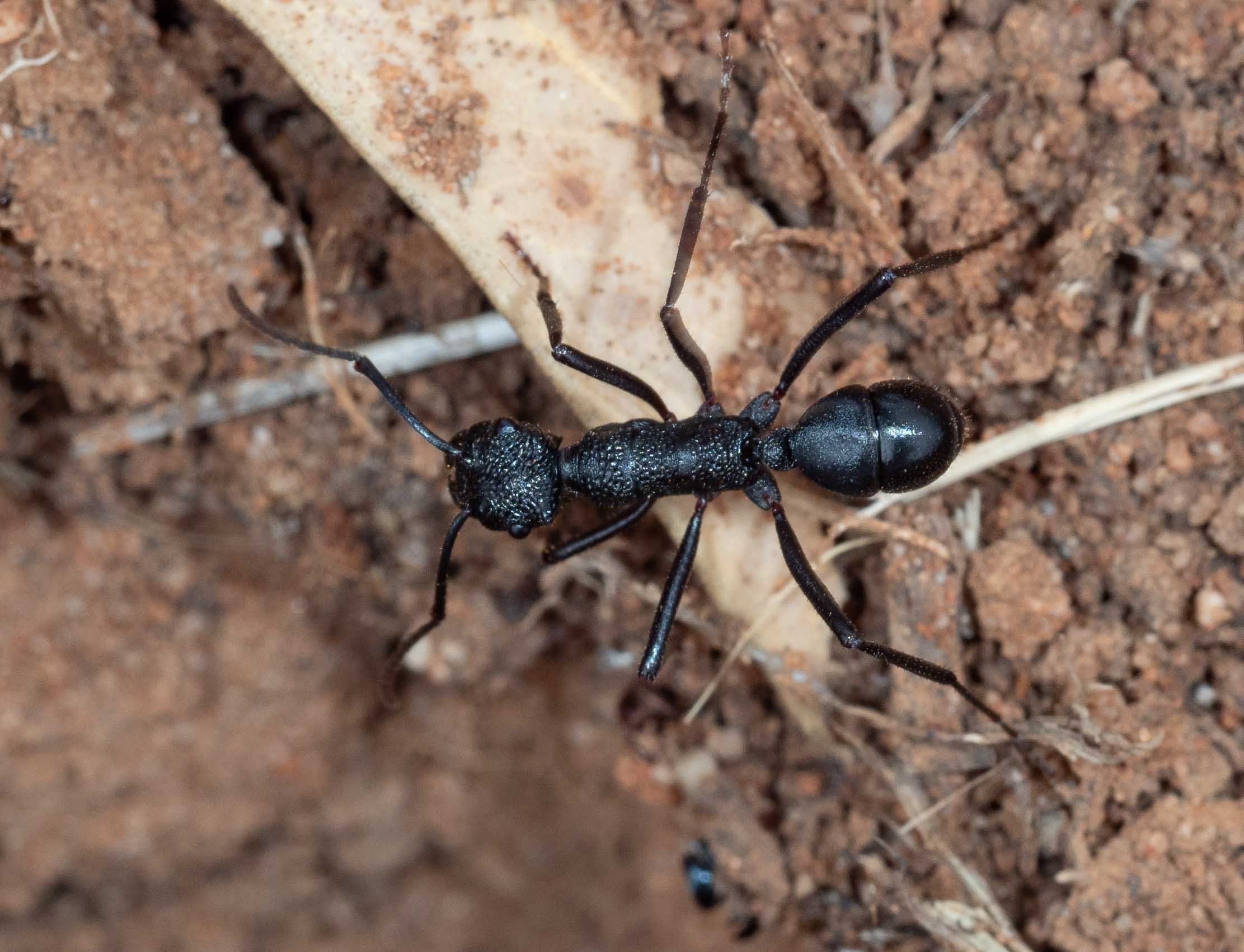
A relative of the Green-head Ant, and like their relatives they have a sting. And wrinkled-looking skin ... 'rhytid' is a medical term for wrinkles ... making this genus quite recognisable in the field (ref. 4).

This species does build an obvious mound. The opening was a ragged tear in the soil, the galleries visible just below the surface. This is consistent with descriptions of newly-established colonies. Mature nests extend around a metre below ground (ref. 5), so the galleries are less obvious.
Mature colonies may contain hundreds of workers (ref. 5) ... but not the thousands of meat ant colonies!
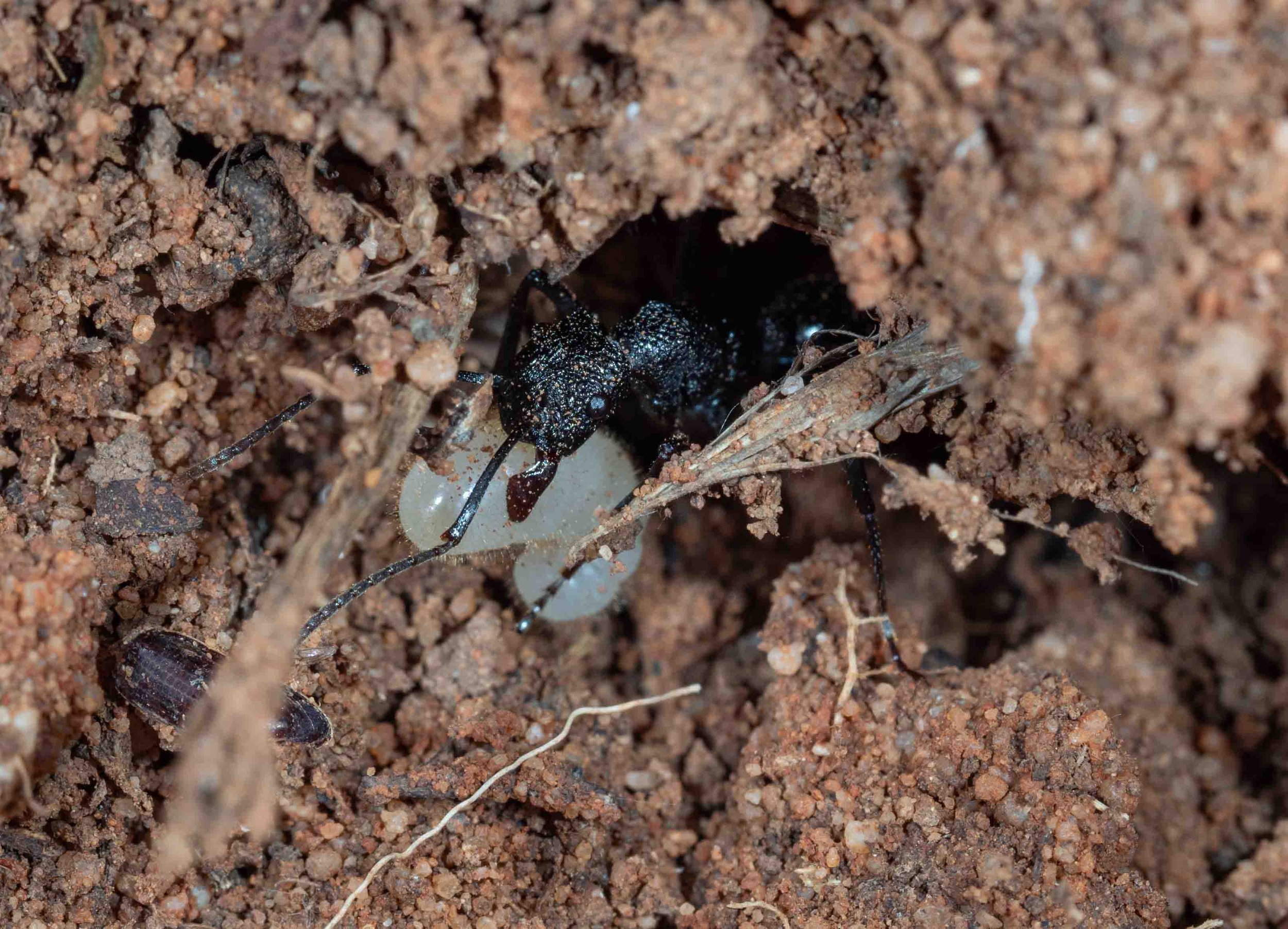
Just inside the nest opening, several workers were carrying larvae from one part of the nest to another.








